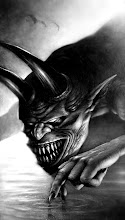




The golden mean is a unique and wonderful thing. I first learned about it quite by chance myself, when an old lady friend of my Granddad’s kindly gave me her entire collection of art magazines that she had saved up in her attic and use to subscribe to when she was younger. Within the pages of one of the two hundred or so magazines I found a complete article on the golden mean.
The golden mean is in practical terms a mathematical ratio, which represents in numbers a proportional division that occurs more often than any other natural pattern within nature. It can be observed almost everywhere (if you are looking for it) and can and has been utilised by artists going right back to the ancient Greeks.
It’s best practical use to artists in my opinion is in solving to some extent some of the problems of composition and design in art. Wherever you have to make a decision about a random proportion and don’t know where to mark a division - the golden mean is an invaluable tool! Some things just don’t seem right when dealing with element ratios (space and form positioning and division of masses) in artwork, all the features can be accurate and well rendered but they sometimes just seem ‘uncomfortable’ to look at. I think over time people can develop a loose sense of what works with repeated practice, but the path to that point is full of hit and miss experimentation (and a lot of the aaargh factor), with this elusive and highly subjective ‘Rightness’ aspect never making any real logical sense at all.
This is where the golden ratio comes in handy! It won’t answer that big ‘rightness’ question (if any ones sussed it out please tell me :) - but it can help to solve some of the associated problems. The figure (Phi) 1.618033988749895 (call it 1.62 rounded up) is the magic number, and when divided into any measurement it produces a proportional separation which is commonly regarded as pleasing to the eye (most probably due to its dominance as the most familiar and recurring natural pattern division). So you get the idea, for example - problem – How log shall I make the dagger blade in relation to the handle, pommel, and hilt? Answer = draw a length divide it by 1.62 and bob’s your uncle! Problem – Where would be a nice place to put the horizon in my picture? Answer = Measure the height of the drawing space and divide it by 1.62 and mark the division. Here are 2 possible solutions to somewhat random problems backed up by the natural world, which you now have the option of taking or leaving (Which sure beats shooting blind).
Now who the heck wants to work their artwork out with a calculator! Nope me neither! That’s why I had a look on the net to see if there was a gauge that supported this ratio, and there is. Dentists use them all the time when making false teeth, to get a nice balance between differing tooth sizes, but they are very expensive to buy and have only a small-scale capacity.
To cut a long story a tad shorter, I found a guide to make your own out of card and paper press-studs (see above) and it works great! I made some scale adaptations for a subsequent smaller pocket sized version that I use to do tiny divisions (see picture) for use on thumbnails, as the standard version has a limited minimum size use. It should be reasonably clear from the photos how to do the modifications if you wish to do the same too (see photos).
But it’s a great device! I use it most days, and it solves me loads and loads of problems, probably one of the best practical tools I’ve ever found, and the possibilities for its application in art and design are vast. Best of all it’s FREE with a bit of sweat. Thought it’d be nice thing to share it with anyone who’s interested – so enjoy! Let me know if you love it as much as me.


